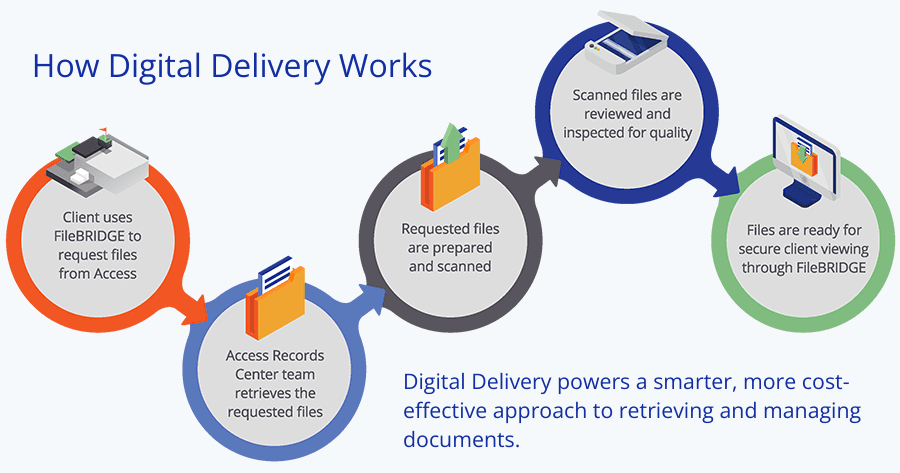
Many organizations are having to rethink their processes, especially as they relate to managing business-critical documents and information. Today, having that information locked inside a piece of paper doesn’t produce value and it certainly isn’t increasing the overall productivity of your organization. In the age of big data and machine learning, having information truly at our fingertips is the only way to remain competitive.
But you knew that already.
Unfortunately, the state of the world is forcing organizations to revisit their digital transformation strategy, or otherwise hastily develop one. The trouble many face is that workers can’t wait until analysis is completed – you need that information today. So, what is the happy medium between getting quick access to your information and remaining strategic in your decision-making?
Transformation of physical records
Instead of having to wait for paper records to be retrieved from storage and delivered, record collections can be scanned on demand on a request-by-request basis. This means you don’t have to wait for a full digitization project to realize the benefits of digitization.
In this process, requested items are scanned and uploaded to our online repository for secure, instant access and viewing. The image then remains available whenever you need it, reducing cost and increasing productivity. It’s a simple change, but it allows your organization to build a digital archive that can naturally guide your business into a paperless environment.
As you reap the benefits of the digitization requests, many organizations will want to expand the benefits into a more proactive approach. But ‘scan everything’ is rarely the best answer even though digitization is often a clear opportunity. The rubric of Information Governance, business efficiency, and corporate strategy needs to align, especially for highly regulated companies such as hospitals, pharmaceutical manufacturers, and others. The ability to convert physical inventory to ‘work-from-anywhere’ information requires not just technical know-how, but an awareness of compliance, governance, and chain-of-custody rules and regulations. Working with an expert, trusted partner can help a lot in these situations.
Incremental transformation driven by business need
Organization-level strategic changes often take years to implement. That’s probably a big part of why you haven’t moved to a reduced-paper environment already. As mentioned, starting small, one request at a time, will lead you down the path towards working smarter and make every step you take towards digitization valuable.
For more on how to rationally approach digitization, read our eBook, Going Paperless? Avoiding the Legal Pitfalls of Digitization





